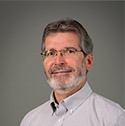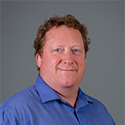Ask the Experts: Cell Health Assays Q&A
- Should I measure live cells or dead cells?
- Which marker should I use?
- What does the data tell me?
Summary
Understanding how culture conditions or disease states affect cell health is a crucial yet difficult task. From choosing the right cell health assay to performing the assay to interpreting the data, each step has its own challenges and raises difficult questions.
Our cell health experts, Dr. Terry Riss and Drew Niles, have over 50 years of combined experience developing cell health assays. They will share their experiences in this live session, which includes tips for avoiding assay variability, which controls to use and which assays work best with 3D cell culture models.
Speakers

Dr. Terry Riss
Senior Product Manager
Promega Corporation
Dr. Riss received a PhD in Cell Biology from the University of Illinois in 1978 in the field of mammary gland biology. He did postdoctoral work at the University of Texas Medical School in Houston purifying growth factors involved with breast cancer and developing serum-free media formulations to implement bioassays. Dr. Riss moved to the Biotechnology division of Schering Plough in 1988 to develop interleukin/cytokine bioassays to support investigational new drug filings. Dr. Terry Riss started the Cell Biology program at Promega Corporation in 1990 and has held several R&D and Project Management positions. Dr. Riss managed development of cell viability, cytotoxicity, apoptosis, and protease assay systems and also lead efforts to identify and promote multiplexing of cell-based assays to determine the mechanism of cell death. Dr. Riss now serves as Senior Product Manager involved in outreach educational training activities. Dr. Riss participates in NIH study sections and is co-editor of the cell culture assays section of the Assay Guidance Manual hosted by NIH.

Andrew Niles
Senior Research Scientist
Promega Corporation
Andrew Niles is a Senior Research Scientist in the Assay Designs Group at Promega Corporation (Madison, WI). His laboratory is focused on developing homogeneous “add-mix-measure” assay chemistries for cell-based studies. The lab utilizes fluorescent and/or bioluminescent detection platforms configured in plate-based, multiplexed formats to detect cytotoxicity and elucidate mechanism of action. These efforts have led to multiple commercialized assay systems in the area of in vitro toxicity testing. He has been awarded eleven U.S. Patents relating to cell and protease biology, authored several book chapters and reviews, and is an active member of Society of Toxicology, Society for Laboratory Automation, Laboratory Robotics Interest Group, and American Association for Cancer Research.